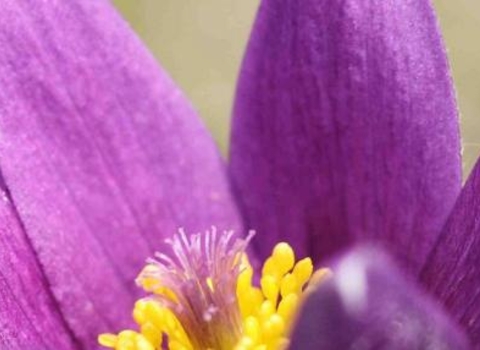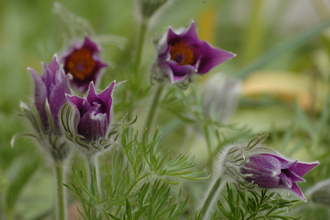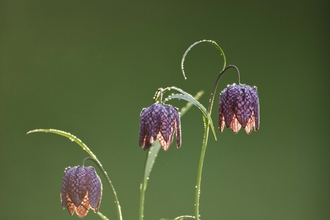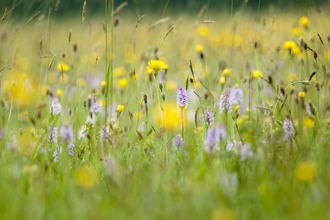Pasque flowers
On Good Friday, tradition has it that the pasque flower comes into bloom. While they may not always be exactly on time, when it does happen, the eruption of these showy blooms across some of our finest chalk grassland is a sight to behold. A low growing plant with a cushion of feathery grey-green leaves amongst the short turf, the flowers are a stunning velvety-purple, with open upward-facing bells containing a contrasting golden-yellow stamen-filled centre. After pollination the flower head suddenly shoots upwards, leaving a delicately fluffy seed head standing proud above the grass.
Easter sees the flowering of the purple pasque flower, also known as the wind flower
Find pasque flowers
Pasque flower is now a very rare plant in the wild, lost from many of its former sites. More than 99% of our pasque flowers are now found on just five sites in the UK.
- Hertfordshire, Fox Covert (and nearby Therfield Heath have one of the largest populations where up to 60,000 plants come into flower each spring in an impressive display)
- Oxfordshire, Hartslock
How to do it
Pasque flowers grow on short turfed grassland, usually on well-drained chalk slopes. Another name for them is ‘wind flower’, and it’s no surprise: its favoured sites can be somewhat windswept during the early spring, so be prepared for a little weather on sometimes steep hillsides.
If you can't get there
You can also see pasque flower growing in profusion on some National Nature Reserves, at Barton Hills and Knocking Hoe (Bedfordshire) and Barnack Hills and Holes (Cambridgeshire). Legend has it that pasque flowers spring from the spilled blood of Viking warriors...
More wildlife experiences
From seeing colourful wildflowers to spotting magnificent birds of prey, we can help you get closer to wildlife across the UK.






